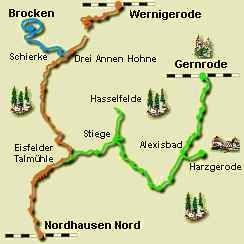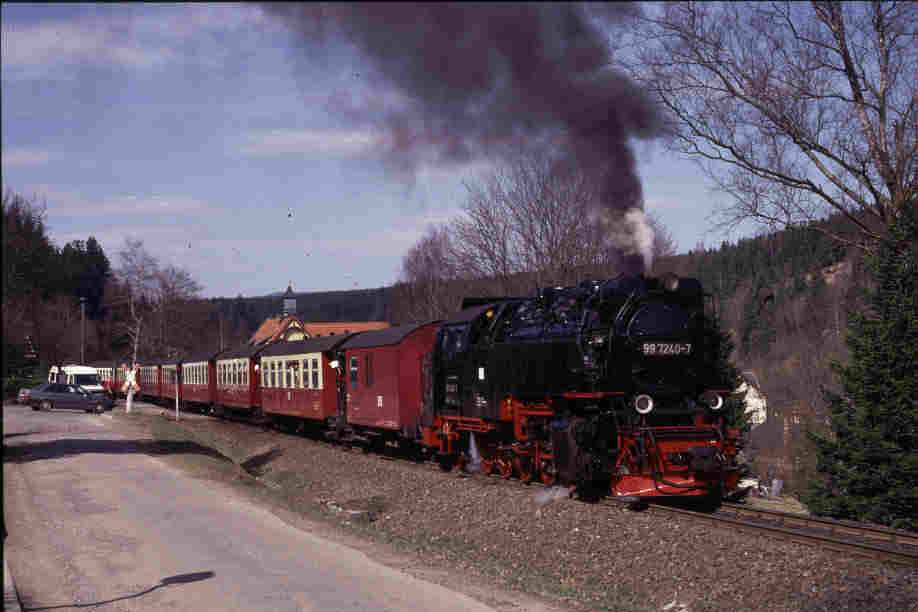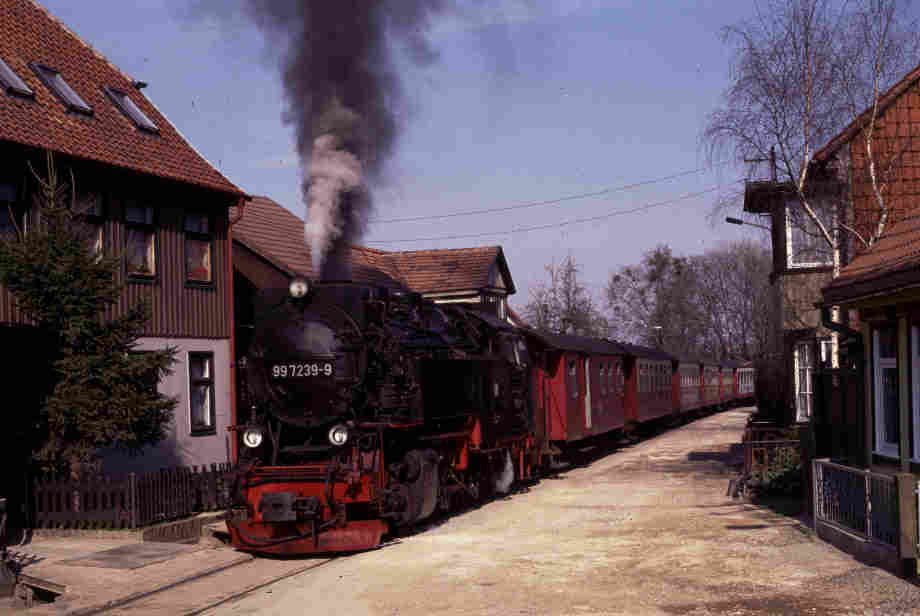��
Regular steam operations in Germany are concentrated in three areas of what was formerly East Germany.�� In the Harz Mountains region there are three interconnected metre-gauge lines, the Harzquerbahn, the Selketalbahn and the Brockenbahn.�� Two more lines operate on the Baltic coast, near the city of Rostock - the Mollibahn from Bad Doberan to Kuhlungsborn and the Rasende Roland on the Isle Of Rugen.�� Much further south in Saxony are four 750mm gauge lines - all within reasonable proximity of Dresden - which continue to be a part of the local transport infrastructure catering for visitors and locals alike.�� All of these lines operate throughout the year are now owned by private companies rather than the state railway system.��
The Brockenbahn was opened in 1899 as a tourist railway to enable visitors to reach the summit of the Brocken and over 100 years later continues to be well-patronised.� The other two lines are much less well used and their futures are in considerable doubt.� All three lines have been privatised and can no longer rely on generous state subsidies to keep them going.


The oldest of the three lines in the Harz Mountains is the Selketalbahn which runs from Gernrode to the junction with the Harzquerbahn at Eisfelder Tamuhle.� The original section from Gernrode - Stiege was opened throughout in 1891 although the connection to Eisfelder was not opened until 1905.
Meanwhile the section of the Harzquerbahn from Nordhausen to Ilfeld opened in 1897.� The extension of the line to Drei Annan Hohne was opened in 1899 where it met up with the Brockenbahn.� The third line, the Brockenbahn, opened between Wernigerode and Schierke in 1898 with the line from Schierke to the summit of the Brocken opening in the following year.�� The Brockenbahn was conceived as a tourist railway to enable visitors to reach the summit of the Brocken Mountain and over 100 years later the Brockenbahn continues to be well-patronised with six or seven steam hauled trains per day.� The other two lines are less well used with a very limited steam service supplemented by diesel railcars.
Whilst the future of the Brockenbahn would seem to be secure thanks to the large numbers of tourists, the future of the Selketelbhn and the Harzquerbahn, which rely almost entirely on local patronage, must be in considerable doubt as they can no longer rely on generous state subsidies to keep them going.�� Riding behind steam on these lines is always enjoyable.� A return journey from Wernigerode to the summit of the Brocken costs about �15, whilst the 80 mile return journey from Wernigerode to Nordhausen is a bargain at just under �9.



Krupp 2-6-2T No.99-6001 taking coal at Wernigerode shed (top right)
LKM 2-10-2 N0.99-7238 stands in front of the signal cabin in Wernigerode yard with No.99-7222 in background (lower right)


No.99-5901 climbs towards Drei Annan Hohne
